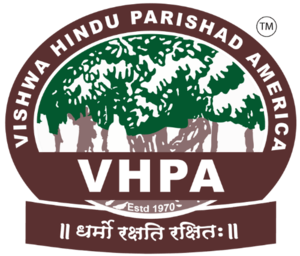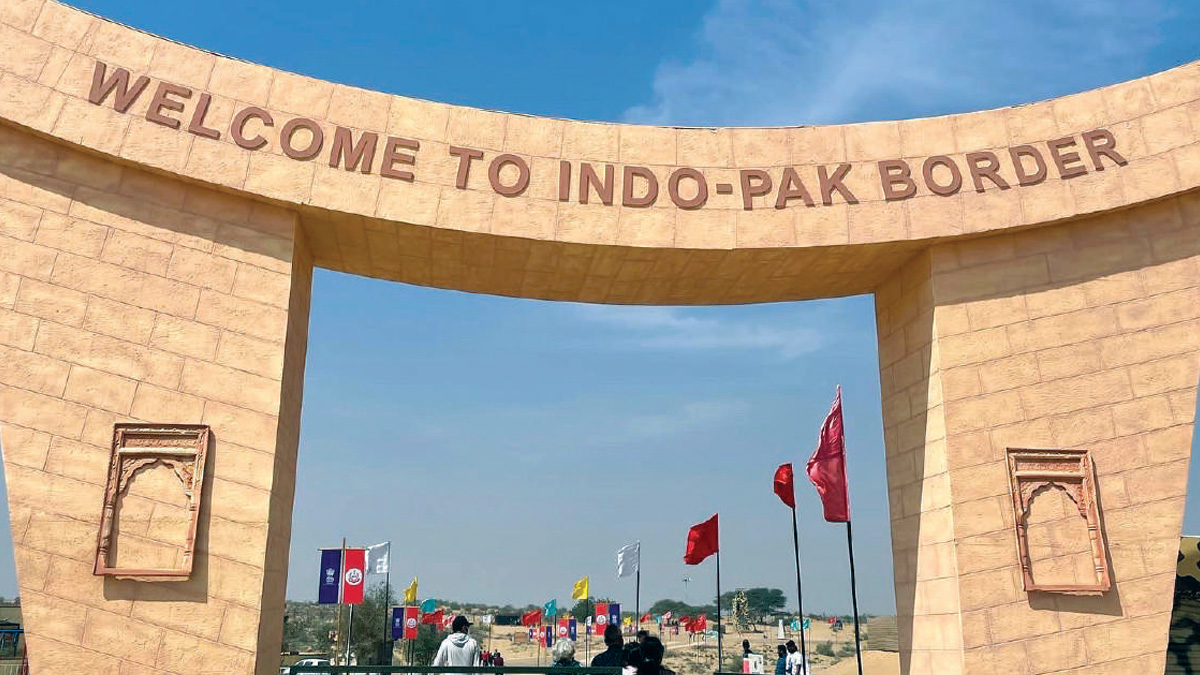Whenever we will depict the glory of Bharat, the remarkable story of border security forces, and the bravery and patriotism of the Indian army at the Longewala Post will be always discussed with pride. The battle at the Longewala post was fought during the 1971 war between Pakistan and Bharat and this stopped the enemy from breaching our borders.
Longewala is located in the Jaisalmer district of Rajasthan, which is the largest by area. It is situated 108 km west of Jaisalmer, 43 km from Ramgarh, and 15 km east of the border. Between the border and the post, there is a historical mandir of Shri Tanot Mata Ji.
I would like to share my experience of being at Longewala. We started our journey from the border going east. At the border, there is a fence of heavy wires to protect India from infiltration. There was not much activity on the Pakistani side. There is a lookout tower to get a bird’s eye view across the border. There are plans to make it a destination of interest like the Wagha border, hosting the Army’s parade and retreat, a playground for children, and a large pavilion.
From the border, we arrived at the Shri Tanot Mata mandir. The mandir is located 126 km from Jaisalmer. Shri Tanot Mata mandir was founded by King Tanu Rao in 858 AD. It is the mandir of the Royal Bhati family of Jaisalmer and Tanot Mata is Kuldevi (Family Devi) of the Bhati family. The mandir is surrounded by dunes. It gets extremely hot in the summertime. Even in March, it hit 90 degrees F. During the 1965 war, the Pakistani army bombarded the Mandir more than three thousand times, but nothing happened to the mandir. It is said that either the bombs were misguided or got buried in the dunes. Since then BSF (Border Security Force) has taken over the management, operations, and security of the mandir. Tanot Mata Mandir is the headquarters of the BSF now. In the 1971 war again this mandir was targeted, but it again endured. It is, for this reason, there is a Devi mandir in every post of the Indian Army. The divine mother is the ultimate savior of us. Mata is the symbol of Shakti (Power), and Shakti is the (Atman) soul of every soldier.
Shri Tanot Mata is deeply respected and widely worshiped by the locals. The mandir has several memorable photos and artifacts of the war. There is also a Vijay Stambha (Victory Tower) built outside the mandir.
After having Darshan of Shri Tanot Mata, we reached Longewala Post, our most important and ultimate journey. During the 1971 war, the Indian army was busy helping Mukti Vahini in Bangladesh for its liberation from Pakistan. Therefore, the Pakistani army thought India would have many vulnerable points on the western border, so if they could enter from the western side, India would lose the war. With that mission in mind, the Pakistani army made a secret plan to attack the Longewala post. Their slogan was; breakfast in Longewala, lunch in Ramgarh, and dinner in Jaisalmer. And, if they reached Jodhpur, India would surrender.
On the evening of December 3rd, 1971, Lieutenant Dharmveer Bhaan was patrolling the border with his colleagues; they noticed some noises coming from across the border and the signs of moving tanks. Kuldip Singh Chandpuri was the Major of the Punjab Regiment and was in charge of the post. He had a total of 120 soldiers with him at that time. The Pakistani army was estimated to be about three thousand in number. Major Chandupri sent the message to headquarters to send for additional troops as well as help from the Air Force to combat this attack by Pakistan. It was late evening and the Major got the message that Air Force jets would not reach until early morning, it was almost 6 – 8 hours gap. They were told to leave the post.
Major Kuldip Singh Chandpuri asked each of his soldiers either to leave or to stay and fight. The soldiers were not ready to leave the post and show their back to the enemy. It was a cold full moonlight night of December 4th, Major Chandpuri along with his 120 soldiers with all the available ammunition, bombs, and grenades lay hiding behind the mud post. There was total silence as the Pakistani army with sixty-five Patton tanks moved towards the post. Major waited patiently till the tanks came within 15-20 meters of the post. All of a sudden, Major ordered a bombardment of the oncoming tanks. It disabled most of the tanks and buried them in the sand. Thirty tanks were destroyed right away. For the next 6-8 hours, the Indian army fought fiercely killing two hundred Pakistani soldiers and destroying five hundred of their vehicles. India lost only two of its soldiers. This smart move from the Major and his troops made the Pakistani army completely confused and disoriented.
In the morning, Air Force jets arrived and took over the post to continue the fight.
The battle at Longewala post is unique in the history of the Indian army and speaks of its endless bravery. This war saved India from Pakistan entering her western borders. Major Kuldip Singh Chandpuri was honored with Mahaveer Chakra and so were his other colleagues with other valor awards.
The Longewala post now has very a lively and historical museum narrating the stories of the war. At the site, there is also a theatre that shows a movie about the war that makes you relive the war. There are several tanks and planes on display. There is also a memorial of the war, a victory tower, and a huge gate reminding visitors of the sacrifice of our soldiers.
We are commemorating 50+ years of the 1971 war when more than 3 million Hindus were killed by the Pakistani army in Bangladesh. Let us pay our respect and pranam to all who fought for us and lost their lives protecting us.
renurajvanshigupta@gmail.com



![[ India Today ] Ohio senator JD Vance thanks wife, a Hindu, for helping him find Christian faith](https://hinduvishwa.org/wp-content/uploads/2024/06/us-senator-jd-vance-reveals-how-his-hindu-wife-usha-helped-him-find-his-christian-faith-image-re-272530504-16x9_0-120x86.webp)










